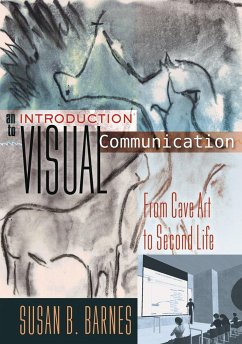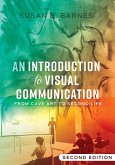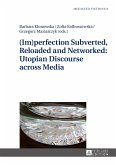Technological changes have radically altered the ways in which people use visual images. Since the invention of photography, imagery has increasingly been used for entertainment, journalism, information, medical diagnostics, instruction, and communication. These functions move the image beyond aesthetic issues associated with art and into the realm of communication studies.
This introductory textbook introduces students to the terminology of visual literacy, methods for analyzing visual media, and theories on the relationship between visual communication and culture. Exploring the meanings associated with visual symbols and the relationship of visual communication to culture, this book will provide students with a better understanding of the visually oriented world in which they live. Student-friendly features such as boxed topics, key terms, web resources, and suggestions for exercises are provided throughout.
This introductory textbook introduces students to the terminology of visual literacy, methods for analyzing visual media, and theories on the relationship between visual communication and culture. Exploring the meanings associated with visual symbols and the relationship of visual communication to culture, this book will provide students with a better understanding of the visually oriented world in which they live. Student-friendly features such as boxed topics, key terms, web resources, and suggestions for exercises are provided throughout.
«This book is a joy to read. The credible and extensive body of critical thought it addresses immediately makes clear how visual communication is a topic relevant to virtually everybody. This book makes for an excellent introduction to visual communication approaches, providing analytical, historical, semiotic, and other rich approaches to understanding visual texts. The wide range of examples are cogent, imparting appreciation of and insight into ways in which visual worlds shape human experiences. With a philosophical approach that is both historically and pedagogically sound, this important work provides a clear set of principles and a language for us to speak about visual communication.» (Mark Lipton, Associate Professor in the College of Arts, University of Guelph; Director of the Media Education Project)
«Few undergraduate texts look at the visual design of information and most do not embrace an applied approach where students learn specific cognitive theories and then apply them in the construction of visual messages. Susan B. Barnes's extensive background and profound knowledge of art and design is coupled with her up-to-date grasp on visual literacy in the digital age, making this text distinctly different from other introductions to visual communication. Her writing style and content organization is highly accessible to the undergraduate student. Meticulously researched, this text is comprehensive enough for programs that have only one visual course and, at the same time, rich enough to be shared over two related courses.» (Roxanne O'Connell, Associate Professor and Chair of the Department of Communication and Graphic Design, Roger Williams University)
«Few undergraduate texts look at the visual design of information and most do not embrace an applied approach where students learn specific cognitive theories and then apply them in the construction of visual messages. Susan B. Barnes's extensive background and profound knowledge of art and design is coupled with her up-to-date grasp on visual literacy in the digital age, making this text distinctly different from other introductions to visual communication. Her writing style and content organization is highly accessible to the undergraduate student. Meticulously researched, this text is comprehensive enough for programs that have only one visual course and, at the same time, rich enough to be shared over two related courses.» (Roxanne O'Connell, Associate Professor and Chair of the Department of Communication and Graphic Design, Roger Williams University)








